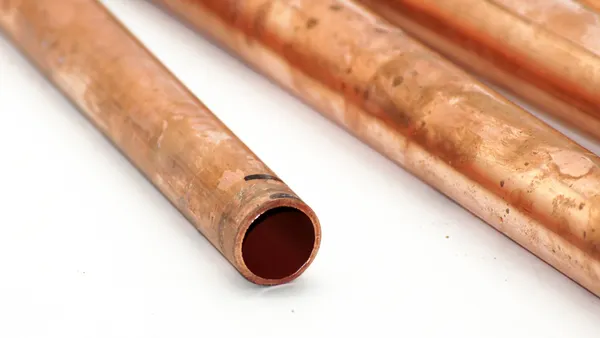Dive Brief:
- Researchers at NYU Tandon School of Engineering are developing a method using drones, robots and AI to examine building exteriors for leaks.
- The research team received a one-year $1 million Civic Innovation Challenge award from the National Science Foundation and the U.S. Department of Homeland Security to support their work, according to an Oct. 12 press release.
- The project seeks to ensure easier compliance with New York City’s Local Law 97, set to be enforced in 2024 with a goal of achieving a net-zero emissions status for large buildings by 2030.
Dive Insight:
Inadequately maintained building exteriors, comprising outer walls, roofs, doors and windows, have been adding to New York City’s greenhouse gas emissions. Poorly insulated envelopes lessen the impact of overall thermal insulation due to air leakages from wall penetrations which exhibit significantly higher rates of heat transfer than surrounding materials, according to a report from the city mayor’s office of sustainability. As a result, additional energy is needed to heat and cool buildings to maintain stable indoor air temperatures, the report said.
Drawing on expertise in robot perception, the AI-powered technology under development at NYU detects building envelope leaks through robots and drone scans. By enabling the non-invasive detection of moisture and thermal irregularities in building envelopes, engineers will not need to make as many physical visits. The data collected would be sent to cloud-based servers and analyzed by AI-powered software that can generate detailed reports on building conditions, the release stated.
Chen Feng, assistant professor at NYU’s Departments of Civil and Urban Engineering and Mechanical and Aerospace Engineering is the project’s principal investigator. Feng said the technology will allow building inspection practitioners to perform more inspections than traditional methods, significantly saving time, especially for locations that are not easily accessible.
“Moreover, our deep learning methods will allow the novel use of unconventional sensors to pinpoint various building envelope defects,” Feng said in the release.
“Building envelopes have a significant impact on energy efficiency, occupant comfort, and overall structural integrity,” Semiha Ergan, a CUE associate professor who is working with Feng on the project, said in the release. “Poor air and moisture sealing within these envelopes contribute to worse building emissions and can lead to adverse health outcomes for those who reside within.”
The project not only shows a new technological approach to the building inspections necessary for Local Law 97 compliance, but also demonstrates a unique academic-civic collaboration, a spokesperson at NYU Tandon School of Engineering said in an email to Facilities Dive.
Last year, the research team was conferred with a first-stage award in partnership with New York City’s Department of Citywide Administrative Services, the New York City Office of Technology and Innovation and New York City District 2030, NYU said. The stage-one work involved using thermal-sensing drones and a preliminary version of a robotic data collection platform to conduct a pilot assessment of buildings at the Brooklyn Army Terminal, the release said. The university noted that the success of that first phase set the stage for this $1 million award that allows the team to continue its research.
Through 2024, the team intends to develop and deploy an autonomous robotic data collection system equipped with sensors such as ground-penetrating radar, GPS and Lidar as well as optical and thermal cameras, the institution said in the release. It noted that drones will also be harnessed to capture the thermal and color data of building exteriors.
The team plans to inspect schools owned by the Archdiocese of New York to examine adoption barriers and opportunities for the new technology from academic, social and political angles in collaboration with a research group led by Diana Hernandez, associate professor of sociomedical sciences at the Columbia University Mailman School of Public Health.












